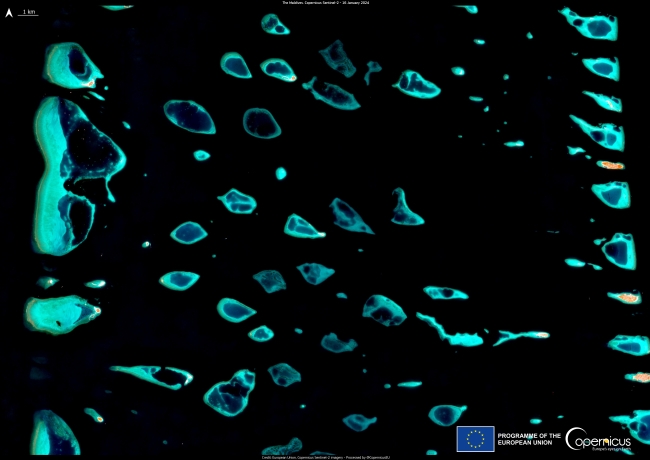Publié le 13 février 2024
Coral bleaching is a marine phenomenon which occurs when corals expel the algae living in their tissues, causing them to turn white or pale. This expulsion is often triggered by environmental stressors such as rising water temperatures, pollution, or changes in ocean chemistry. Without the colourful algae, corals lose their primary source of food and become more vulnerable to diseases. Bleached corals are not dead, but they are weakened and more prone to mortality. If the stress persists, entire coral reef ecosystems can suffer irreversible damage, impacting marine biodiversity and the livelihoods of entire ecosystems.
Recently, the unprecedented levels of heat stress suffered by coral reefs have led the Coral Reef Watch programme of the National Oceanic and Atmospheric Administration of the United States (NOAA) to add three new levels of coral bleaching alert to their scale.

This image, acquired by one of the Copernicus Sentinel-2 satellites on 16 January 2024, shows the Maldives Coral Reefs, which are currently suffering from coral bleaching.
Copernicus Marine data enables comprehensive monitoring and forecasting of sea surface temperatures and other physical and chemical indicators, providing valuable insights into the changing conditions of the world's oceans.
Source:
Copernicus. (2024, February 12). Three new levels of coral bleaching alert. Image of the Day.